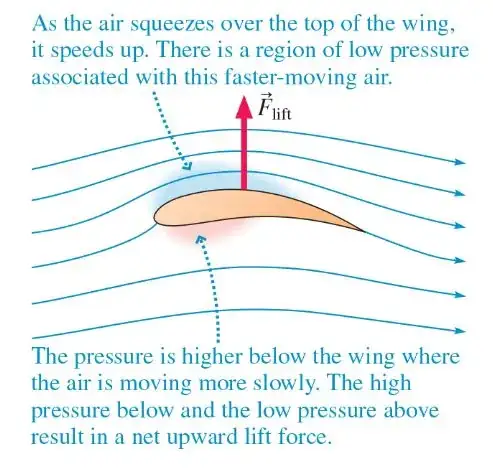In my physics textbook, there's a chapter on fluids which discusses pressure, flow rate, continuity, and the Bernoulli effect. I understand why pressure gradients induce net force on a column of fluid and why that subsequently causes the speed of the fluid to increase as it enters the low-pressure area.
The book goes on to mention some implications of the Bernoulli effect using the example of lift:
Could someone please explain why the speed of the wind increases when it passes over a concave-down shaped structure such as the top of the wing shown here? What exactly causes that speed to increase? I assume it has something to do with the streamlines approaching each other, but why would that cause acceleration?
